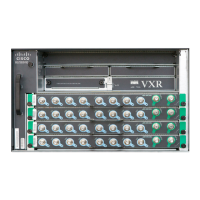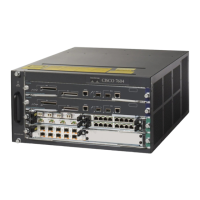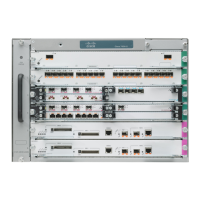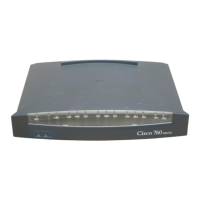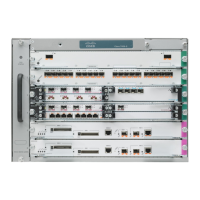Send document comments to nexus7k-docfeedback@cisco.com
4-9
Cisco Nexus 7000 Series NX-OS Interfaces Configuration Guide, Release 5.x
OL-23435-03
Chapter 4 Configuring Layer 3 Interfaces
Configuring Layer 3 Interfaces
3. ip address ip-address/length
or
ipv6 address ipv6-address/length
4. encapsulation dot1q vlan-id
5. (Optional) show interfaces
6. (Optional) copy running-config startup-config
DETAILED STEPS
This example shows how to create a subinterface:
switch# configure terminal
switch(config)# interface ethernet 2/1.1
switch(config-if)# ip address 192.0.2.1/8
switch(config-if)# encapsulation dot1Q 33
switch(config-if)# copy running-config startup-config
Command Purpose
Step 1
configure terminal
Example:
switch# configure terminal
switch(config)#
Enters configuration mode.
Step 2
interface ethernet slot/port.number
Example:
switch(config)# interface ethernet 2/1.1
switch(config-subif)#
Creates a subinterface and enters subinterface
configuration mode. The number range is from 1 to
4094.
Step 3
ip address ip-address/length
Example:
switch(config-subif)# ip address
192.0.2.1/8
Configures an IP address for this subinterface. See the
Cisco Nexus 7000 Series NX-OS Unicast Routing
Configuration Guide, Release 5.x, for more
information on IP addresses.
ipv6 address ipv6-address/length
Example:
switch(config-subif)# ipv6 address
2001:0DB8::1/8
Configures an IPv6 address for this subinterface. See
the Cisco Nexus 7000 Series NX-OS Unicast Routing
Configuration Guide, Release 5.x, for more
information on IPv6 addresses.
Step 4
encapsulation dot1Q vlan-id
Example:
switch(config-subif)# encapsulation
dot1Q 33
Configures IEEE 802.1Q VLAN encapsulation on the
subinterface. The range is from 2 to 4093.
Step 5
show interfaces
Example:
switch(config-subif)# show interfaces
ethernet 2/1.1
(Optional) Displays the Layer 3 interface statistics.
Step 6
copy running-config startup-config
Example:
switch(config-subif)# copy
running-config startup-config
(Optional) Saves this configuration change.
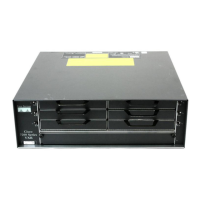
